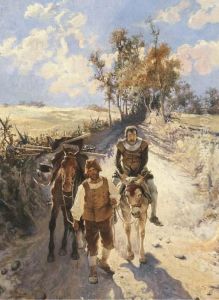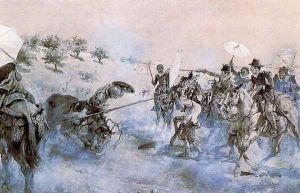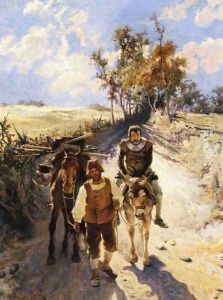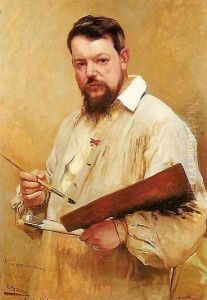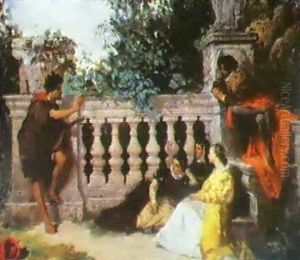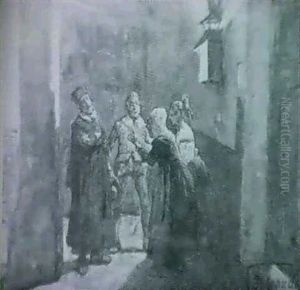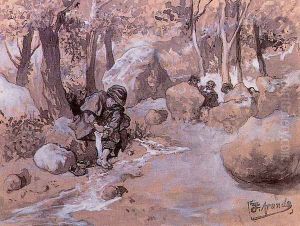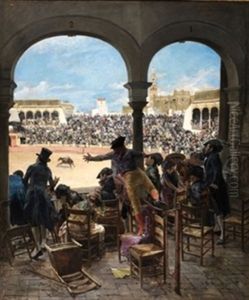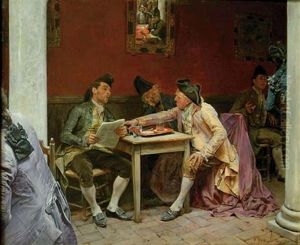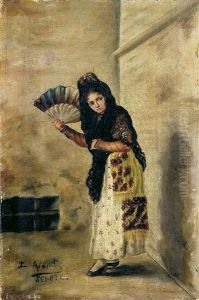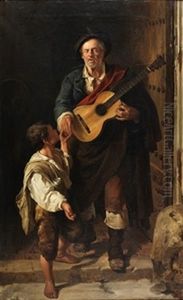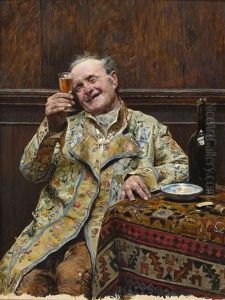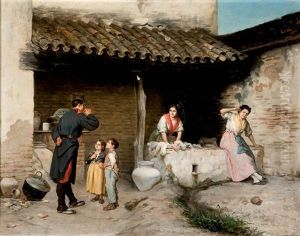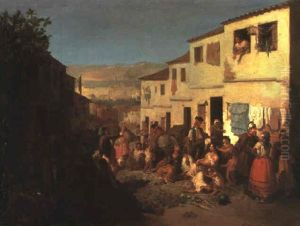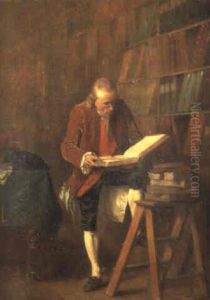Jose Jimenez y Aranda Paintings
José Jiménez y Aranda was a renowned Spanish painter, born on February 7, 1837, in Seville, Spain. He was part of an artistic family, with both of his brothers, Luis Jiménez Aranda and Manuel Jiménez Aranda, also being accomplished painters. José showed an early interest in art and was initially trained by his older brother, Luis. He furthered his studies at the School of Fine Arts in Seville and later at the Royal Academy of Fine Arts of San Fernando in Madrid.
Jiménez y Aranda's work was greatly influenced by the art of the Spanish Golden Age, particularly by the works of Diego Velázquez and Bartolomé Esteban Murillo. However, he also adopted many elements of the modern styles that were emerging in the mid-19th century. His early works were mostly genre paintings, depicting scenes of everyday life in Spain with a high level of detail and a keen sense of realism.
In 1867, Jiménez y Aranda traveled to Paris, where he was influenced by French realist and academic painters. His time in Paris was pivotal; he honed his technique, and his palette became lighter, reflecting the influence of contemporary French painting. He exhibited at the Paris Salon and received considerable acclaim, which helped establish his international reputation.
After spending almost a decade in France, Jiménez y Aranda returned to Spain in 1874 and settled in Madrid. He continued to paint scenes of Spanish life but also began to produce historical and religious works. His painting 'The Game of the Goose,' which he presented at the National Exhibition of Fine Arts in Madrid in 1884, earned him a first-class medal and is considered one of his masterpieces.
Jiménez y Aranda's later years were marked by his appointment as a professor at the School of Fine Arts in Madrid, where he influenced a new generation of Spanish artists. He also served as an academic at the Royal Academy of Fine Arts of San Fernando.
Throughout his career, José Jiménez y Aranda received numerous awards and honors for his contributions to Spanish art. He continued to paint and exhibit his work until his death on May 6, 1903, in Madrid. His legacy lives on through his paintings, which are held in many prestigious collections, including the Prado Museum in Madrid and other museums across the world.
